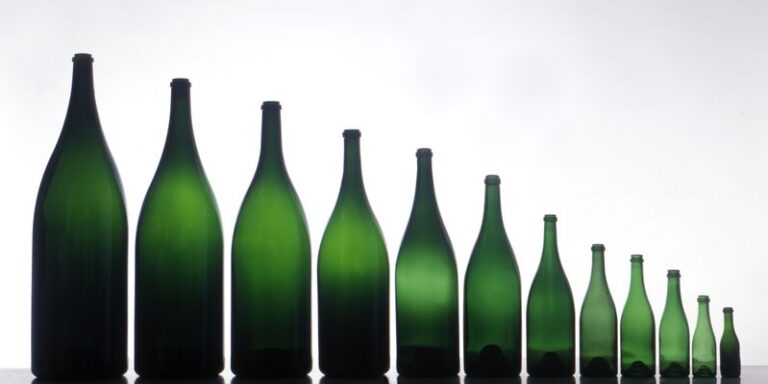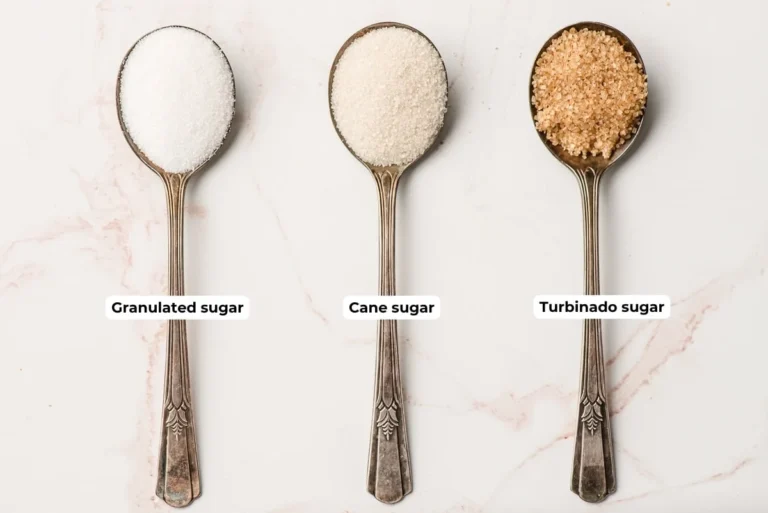TheChampagneSommelier tells the story of a truly legendary terroir – Les Chétillons. [ read the full champagne story ]
Estimated reading time: 11 minutes

For the members of the Richard Juhlin Champagne Club, the journey into the world of Champagne is a quest for more than just effervescence and celebration. It is a pilgrimage into the soul of the land, an intellectual and sensory pursuit of the profound connection between a single plot of earth and the liquid artistry it produces. In this great quest, there is no more fabled destination, no more sacred a site, than Les Chétillons—a legendary lieu-dit in the heart of the Grand Cru village of Le Mesnil-sur-Oger.
In a region where the artistry of blending has long been the dominant philosophy, Les Chétillons stands as a testament to the power of a single, unadulterated terroir. It is a vineyard that has defined the very essence of Blanc de Blancs, a name whispered with reverence among connoisseurs, and the source of some of the most intellectual, long-lived, and exhilarating Champagnes in the world. This extensive article is a deep dive into the history, the hallowed terroir, and the masterful producers who have made Les Chétillons a paragon of viticultural excellence.
Part I: The Holy Ground of Le Mesnil-sur-Oger
To understand Les Chétillons, one must first understand its home. The Côte des Blancs, a narrow, chalky escarpment that stretches south from Epernay, is the spiritual heart of Chardonnay in Champagne Within this hallowed ground lies the Grand Cru village of Le Mesnil-sur-Oger, a name so synonymous with Chardonnay perfection that it requires little introduction. It is here that the purest expression of the grape is found, a place where the chalk bedrock is so dominant that it seems to infuse the very air with a mineral essence.
The village of Le Mesnil-sur-Oger is justly famous for its two most iconic exports: the mythical Salon, a single-vineyard unicorn that needs no further description, and Krug’s Clos du Mesnil, a walled vineyard that produces one of the most powerful and enigmatic Champagnes in the world. However, the true soul of the village, its most complete and multifaceted expression, may well reside in the larger, multi-producer lieu-dit of Les Chétillons.
The Terroir of Legend
Les Chétillons is not a single, monolithic vineyard but a sprawling, undulating plot of land, comprising several parcels with varying degrees of exposure and vine age. Located on an east-northeast facing hillside just below the village, it benefits from an ideal combination of factors:
- Chalk Bedrock: The soil is a thin layer of topsoil over a deep, porous, Cretaceous-period chalk subsoil. This chalk acts as a natural sponge, absorbing winter rains and holding moisture for the vines during the drier summer months. This forces the vine roots to plunge deep into the earth in search of water and nutrients, which in turn leads to a more profound and concentrated expression of the terroir. The chalk is also believed to be the source of the distinctive, almost stony minerality that defines the wines of Le Mesnil.
- East-Northeast Facing Slope: The vineyard’s orientation is critical. It provides perfect exposure to the morning sun, which ripens the grapes slowly and steadily, allowing them to develop complex aromatics while retaining the high acidity that is the hallmark of great Champagne. This aspect protects the vines from the intense heat of the afternoon sun, a crucial factor in an increasingly warm climate.
- Old Vines: Many of the parcels within Les Chétillons are planted with exceptionally old vines, some dating back to the 1930s. As vines age, their yields decrease, but the quality of the grapes they produce increases exponentially. These old vines are the foundation of the wine’s concentration, depth, and ability to age for decades.
The combination of these elements—the pristine chalk, the perfect exposure, and the heritage of old vines—creates a unique microclimate where Chardonnay grapes can reach a state of unparalleled harmony. The resulting wines are often described with a paradox: they are simultaneously powerful and graceful, intensely mineral and beautifully complex, austere in their youth and profoundly generous with age.

Les Chétillons
Part II: The Masters of the Mâitre-Parcelle
While the terroir of Les Chétillons is a gift of nature, it is the hand of the winemaker that translates its potential into liquid form. A handful of visionary producers, many of them small, family-owned growers, have dedicated themselves to capturing the pure essence of this site. These are the masters who have elevated Les Chétillons to a status on par with the greatest single vineyards of Burgundy.
1. The First & Foremost: Champagne Pierre Péters
If Les Chétillons has a spiritual custodian, it is undoubtedly the Péters family. It was Camille Péters who first acquired parcels in this lieu-dit in 1930, but it was his son François who had the foresight to bottle a single-vineyard Champagne from this site for the very first time in 1971. This was a radical act in an era dominated by the blending philosophy of the big houses. Today, Rodolphe Péters, the sixth generation, continues this legacy, and his Cuvée Spéciale Les Chétillons remains the iconic benchmark for the vineyard.
Rodolphe Péters’ approach is one of meticulous precision. He vinifies the grapes from his three parcels within Les Chétillons separately in stainless steel tanks, allowing him to taste and analyze each one before the final blend. His commitment to preserving the purity and elegance of the fruit is unwavering. The resulting wine is a masterclass in finesse and power.
Tasting Profile of Pierre Péters Les Chétillons:
In its youth, it is a wine of intense minerality, with a vibrant, almost electric acidity. The nose is dominated by notes of lemon zest, green apple, and chalk dust, with a floral undertone of hawthorn and acacia. As the wine ages, it undergoes a stunning transformation. The austere, steely core begins to soften, revealing layers of complex aromas and flavors: toasted almonds, brioche, baked apple, honey, and a hint of exotic spices. The texture becomes creamy and rich, while the signature chalky minerality remains, providing a backbone of freshness that ensures its longevity. A perfectly aged bottle of Pierre Péters Les Chétillons is a profound experience, a testament to the fact that great Champagne, like great art, improves with the passage of time.
2. The Neighbor with a Different Vision: Champagne Pierre Moncuit
While Pierre Péters has long been the most famous name associated with Les Chétillons, Pierre Moncuit is an equally revered producer from Le Mesnil-sur-Oger who crafts a compelling and distinct expression of the vineyard. The Moncuit family also has a long history in the village, with their cuvée from Les Chétillons providing a fascinating contrast to that of their neighbor.
Where Péters’ philosophy is one of steel-tank purity, Pierre Moncuit embraces a more traditional approach, with the wines often showing a richer, more powerful character. The result is a Champagne that is a bit more generous and rounded in its youth, while still retaining the hallmark minerality and aging potential of the vineyard. The Cuvée Nicole Moncuit Vieille Vigne from Les Chétillons is a testament to this style, showcasing the ripe fruit and a more expansive palate. This difference in style underscores the incredible power of the winemaker’s touch and how it can interpret the same terroir in a different voice.
3. The Rising Star: Champagne Robert Moncuit
Not to be confused with Pierre Moncuit, Robert Moncuit is another esteemed producer from the village with a significant plot in Les Chétillons, with vines planted as far back as 1956. The house is currently run by the talented Pierre Moncuit-Caillette, who is bringing a renewed focus on single-vineyard expressions and an organic, low-intervention approach to winemaking.
The Robert Moncuit Les Chétillons is often a wine of great precision and tension, with a razor-sharp acidity and a saline, almost oceanic minerality. It represents the exciting new wave of growers who are seeking to capture the most direct and unfiltered expression of a single place. For collectors and enthusiasts, this wine is a thrilling discovery, offering a glimpse into the future of Le Mesnil.
4. The Hidden Gem: Champagne Pertois-Lebrun
While perhaps not as widely known as the others, Pertois-Lebrun is a name that deserves recognition among the top producers of Les Chétillons. This is a house that is also located in Le Mesnil-sur-Oger and has a family history in the village dating back to the 19th century. Their wines are a beautiful expression of the terroir, often showing a delicate floral character combined with the classic mineral backbone.
Their single-vineyard bottling from Les Chétillons is a true insider’s wine, a rewarding find for those who are looking for a nuanced and authentic expression of the site. It is a testament to the fact that even within the most famous lieux-dits, there are treasures waiting to be discovered.
Part III: The Philosophical Connection: Les Chétillons and Richard Juhlin
For a connoisseur like Richard Juhlin, the significance of Les Chétillons extends far beyond its impressive financial value or its stellar critical ratings. The vineyard embodies a philosophy that he has championed throughout his career: the absolute primacy of terroir.
Richard Juhlin’s tasting notes on the wines of Les Chétillons often speak of their profound minerality, their “chalky core,” and their ability to express a sense of place with an almost mystical clarity. He recognizes that what makes these wines so special is their ability to transcend the limitations of vintage and producer, to speak directly of the land from which they came. A great Les Chétillons, whether from Pierre Péters or Pierre Moncuit, is a monument to the chalk, the slope, and the climate of Le Mesnil-sur-Oger.
For the members of the Richard Juhlin Champagne Club, the pursuit of these wines is a natural extension of their passion. It is a journey that began with an appreciation for the broad spectrum of Champagne and now narrows to the specific, the particular, and the sublime. Collecting Les Chétillons is not just about having a great wine in your cellar; it is about owning a piece of viticultural history, a fragment of one of the world’s most cherished terroirs. It is an investment in authenticity, in craftsmanship, and in the enduring power of a single, extraordinary place.
Part IV: The Collector’s Guide to Les Chétillons
Acquiring and cellaring wines from this hallowed vineyard requires a strategic and patient approach.
Vintage is Key, but Less Than You Think
While vintage still matters, a great lieu-dit like Les Chétillons has a remarkable ability to produce high-quality wines even in more challenging years. The best vintages—such as 2008, 2012, 2013, and 2015—are highly sought after and will command top prices. However, a collector should not shy away from a less-heralded vintage from a top producer, as these wines often represent an incredible value and can age just as well as their more famous counterparts. The sheer concentration and quality of the grapes from this site mean that a great wine is possible even in a difficult year.
The Art of the Cellar
The wines of Les Chétillons are born to age. In their youth, they can be so tight and mineral-driven that they almost seem unapproachable. The true magic happens after a decade or more in the cellar. A bottle of Pierre Péters Les Chétillons from the 1990s, for example, is a revelatory experience, transforming from a lean, steely wine into a profound, nutty, and honeyed elixir of astonishing complexity.
For this reason, professional, climate-controlled storage is not a luxury but a necessity. A bottle with impeccable provenance, having rested undisturbed in a perfect cellar since its release, will always command a premium on the secondary market.
Beyond the Bottle: The Value of the Magnum
As with other top Champagnes, the magnum is the ultimate collector’s item for Les Chétillons. Its larger size allows the wine to age more slowly and gracefully, resulting in a more complex and elegant final product. Magnums of Les Chétillons from the top producers are rare and highly sought after, offering an even more significant return on investment and a truly unforgettable drinking experience.
Conclusion: A Timeless Investment
In a world filled with ephemeral trends and fleeting fads, Les Chétillons stands as an unshakeable monument to quality, terroir, and time. It is a vineyard that has shaped the history of Champagne and continues to define the very pinnacle of the craft.
For the members of the Richard Juhlin Champagne Club, the journey into the world of Les Chétillons is a natural and rewarding evolution. It is a step beyond the familiar, into a world where a single bottle of wine can tell the story of a place, a family, and a philosophy. It is an investment in a legacy, in an enduring sense of place, and in the timeless pleasure of the world’s most elegant liquid. To own a bottle of Les Chétillons is to hold a fragment of perfection in your hands, a piece of liquid gold born of the chalk, the sun, and the soul of Le Mesnil-sur-Oger. It is, quite simply, the ultimate expression of the art of Champagne.






